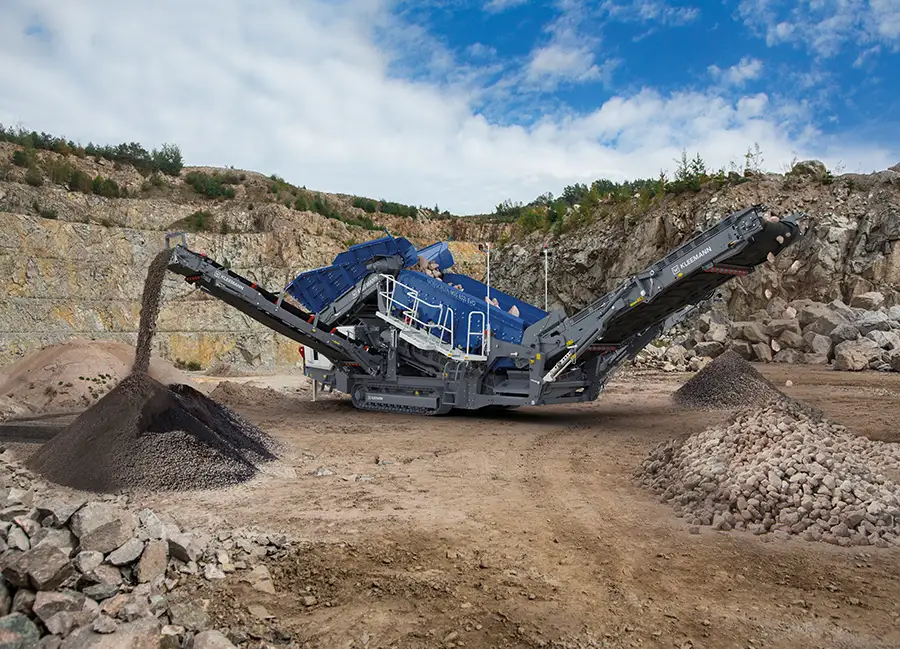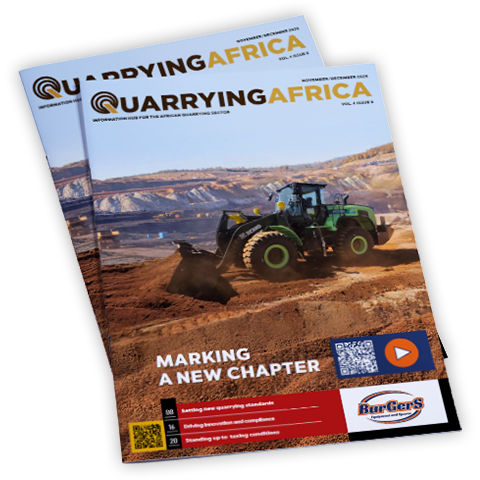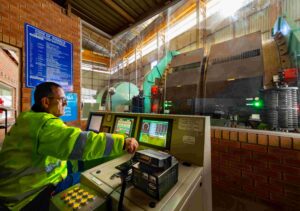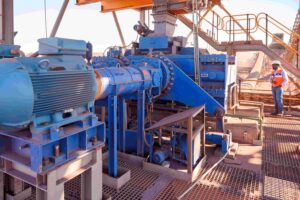Having traditionally partnered another manufacturer for its screening range, Kleemann commenced the production of its in-house designed and built range of screens some four years ago. The first screens to roll off the company’s production line as part of this strategy were the MOBISCREEN MSC 702 and 703 EVO, as well as the MOBISCREEN MSC 952 and 953 EVO classifying screens.
The next natural step, explains Waylon Kukard, sales manager at Wirtgen Group South Africa, was the development of scalping screens, which resulted in the global launch of the Kleemann MSS 802 EVO some two years ago, before the local introduction early this year.
“One of the notable trends in the mobile screening market is the growing popularity of scalping screens, largely due to their versatility compared to classifying screens,” says Kukard. “Because of their ability to be deployed in both heavy duty scalping and fine screening applications, scalping screens have become market favourites, which is why the Kleemann MSS 802 EVO is a big focus for us.”
Apart from the versatility, another big benefit of the machine is its ability to take larger feed sizes than classifying screens. With a feed capacity of 500 tonnes per hour, the Kleemann MSS 802 EVO can take feed sizes of up 500 mm, compared to the 160 mm maximum feed size of a comparable classifying screen.
Efficiency to the fore
With the MSS 802 EVO, Kleemann placed efficiency at the core of the design, with several features that speak directly to this important parameter. The new generation Kleemann machines are now powered with John Deere engines. Given that John Deere now owns the Wirtgen Group, the manufacturer of the Kleemann crushing and screening range, the engines are designed and specified for the application at hand.
“The engines we have on these machines are not mass produced, as was previously the case. They are therefore mapped specifically for the application. Having the right engine for the right application eliminates a common industry problem of overpowered or underpowered machines, thus maximising efficiency,” says Kukard.
Those who have run John Deere construction engines, adds Kukard, are well aware of their high efficiency. A customer running the first MSS 802 EVO screen in South Africa – which has been deployed in a coal processing application – has already placed a repeat order, citing efficiency as one of the key drivers behind the decision.
One of the key design features with a significant impact on efficiency is the screen box, says Lantie van der Merwe, sales consultant Mineral Technology at Wirtgen Group South Africa. The bottom deck’s tip angle, for example, is designed to allow for optimal material flow, which translates into screening efficiency.
“The large material transfer system to the screen deck allows for optimum utilisation of the screening surfaces. The high discharge heights of up to 4,05 m translate into higher stockpiles,” explains Van der Merwe.
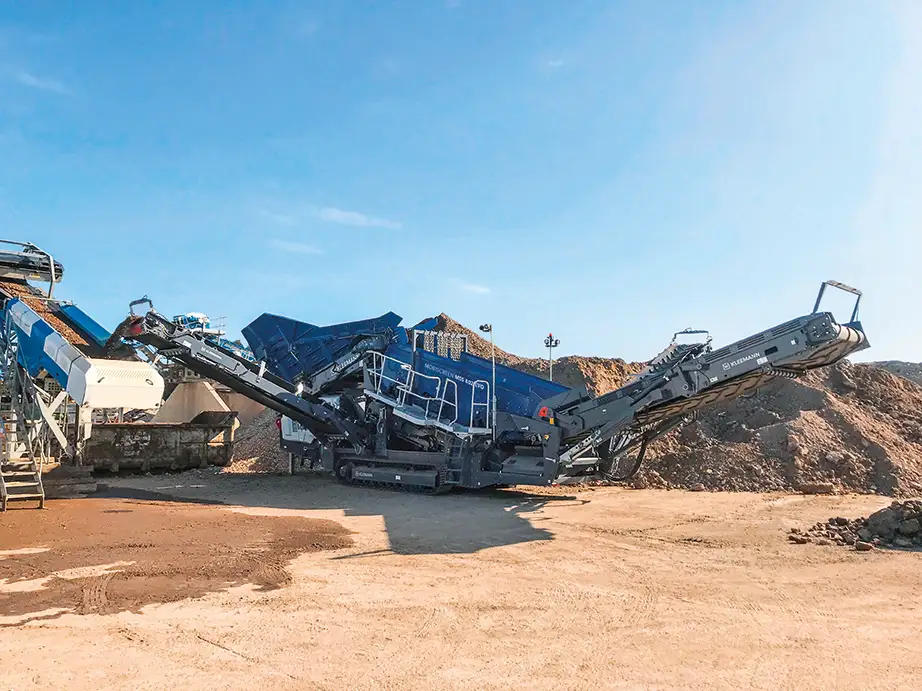
Other key features
The Kleemann MSS 802 EVO’s design places focus on several other aspects such as safety, ease of operation and maintenance, as well as uptime. With safety in mind, the intuitive plant control with automatic start reduces the risk of operating errors. At the push of a button, the machine starts up and also switches off all the components in the right sequence.
All key functions of the machine can be operated from a safe distance using a wired remote-control system, which offers high work safety. “All components on the Kleemann MSS 802 EVO screen are operated via remote control, keeping the operator out of harm’s way with a good view of all the conveyor belts from a distance,” explains Kukard.
One of the key features of this machine is the simple conversion from three to two final grain sizes. With this feature, explains Kukard, operators have the ability to remove the medium size grain conveyor and then combine the fine grain conveyor with the discharge conveyor for oversize grain.
“The conversion from three to two-way grit is a major talking point,” says Van der Merwe. “The MSS 802 EVO can therefore be used to produce and discharge two or three final grain sizes, and the conversion is simple and fast. This means one can go from a double deck to a single deck screen by just removing one of the side conveyors.”
With ease of mobility in mind, the new MSS 802 EVO is designed to fold the side discharge conveyors without the need for disassembly, which reduces set-up times. Increased application variability is provided by a hopper rear wall that can be folded to three heights, thus permitting the feeding of crushing plants which have a lower discharge height.
The large offer of screen surfaces and simple adjustment of the screen parameters, both of which make rapid adaptation of the MSS 802 EVO to a very wide range of feed materials possible, also reduce set-up times and thus personnel requirements and costs. The screen casing angle with a wide adjustment range from 15,4 – 20° makes optimisation of the screening capacity possible.
“With operator friendliness and uptime in mind, the screen box can be lifted horizontally, allowing for quick and easy screen mesh changes,” says Kukard. “It is also important to note that locally we offer the MSS 802 EVO with an apron feeder as standard and a belt feeder as an option. Unlike the belt feeder which is only suited for light material such as coal, the apron feeder allows for the flexibility of deploying the machine in both hard and soft applications.”
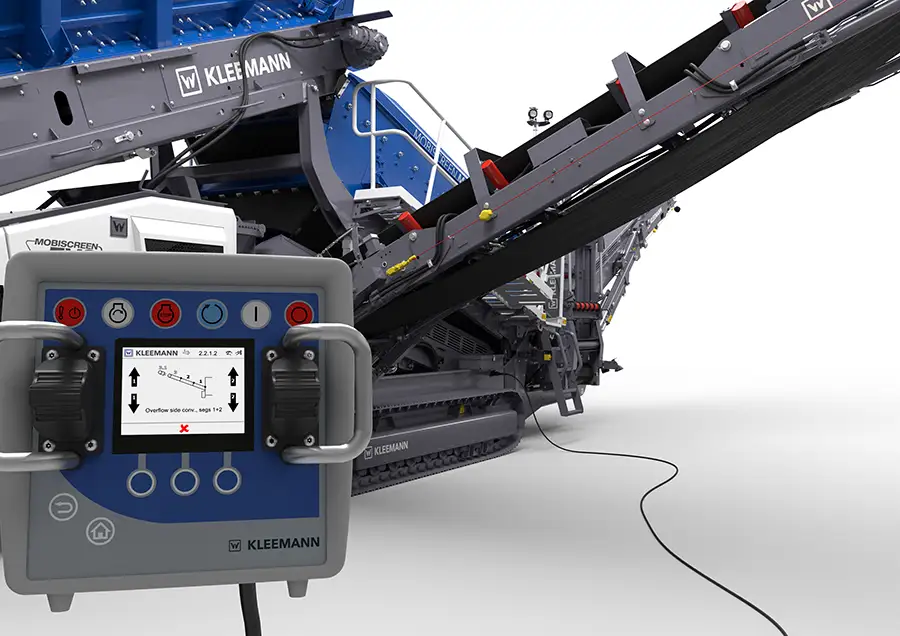
State of market
Commenting on the state of the crushing and screening market, Kukard says that, despite the depressed nature of the South African construction industry, the market is somehow “turning over”. While sales volumes remain depressed in South Africa, the Kleemann range has in recent years enjoyed tremendous success in cross border countries, particularly in Zimbabwe, where infrastructure development has taken centre stage in the past few years.
“On the back of a strong road infrastructure projects rollout, the Zimbabwean market has done well for us in the past three years. Customers operating in the country have taken note of the Kleemann product and its array of benefits. We have sold a record number of units in the country in the past few years and continue to deliver more units. To provide context, we will be delivering three more crushing trains in the country this year,” concludes Kukard.
